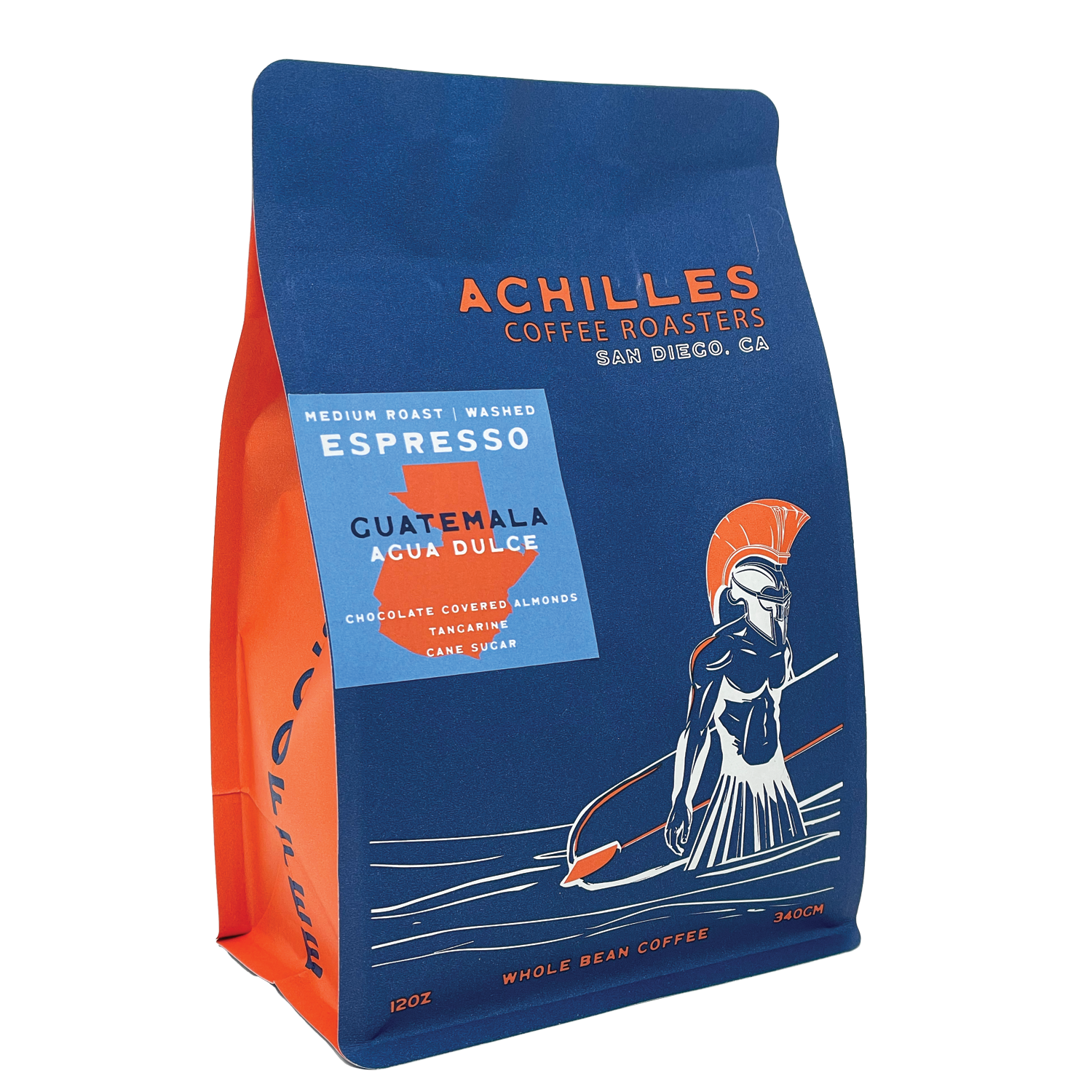SOE Single Origin Espresso – The Go-To Choice for Espresso Lovers
SOE Single Origin Espresso – The Go-To Choice for Espresso Lovers
Blog Article
Coffee Beans 101: Whatever You Need to Learn About Espresso and Blended Coffee Beans
When it pertains to coffee, comprehending the nuances of espresso and blended beans can transform your daily cup. You'll find the distinct characteristics of Arabica and Robusta beans, and exactly how each effects flavor and high levels of caffeine web content. From the expanding process to toasting techniques, every action contributes in your coffee experience. What makes the excellent mixture? Let's explore the necessary aspects that contribute to a remarkable cup of coffee.
Recognizing Coffee Beans: Varieties and kinds
When diving into the globe of coffee, understanding the types and selections of coffee beans is necessary for every single enthusiast. You'll mostly encounter two primary species: Arabica and Robusta. Arabica beans are known for their smooth, complex flavors and reduced caffeine content, making them a preferred among coffee aficionados. On the other hand, Robusta beans load a punch with a more powerful, a lot more bitter taste and higher caffeine levels, frequently made use of in espresso blends.
Within these species, you'll discover numerous local selections, each bringing distinct attributes. For instance, Ethiopian Yirgacheffe offers brilliant flower notes, while Colombian beans provide a healthy flavor profile. As you check out, bear in mind to pay focus to handling methods like washed or natural, as they can substantially influence the last preference. By acquainting on your own with these beans and their flavors, you'll raise your coffee experience and make more enlightened options in your brewing trip.
The Growing Process: From Seed to Bean
When you check out the trip of coffee, all of it begins with seed option techniques that establish the foundation for top quality. From there, farming and gathering play important roles in making sure the beans thrive. Ultimately, processing methods transform those gathered cherries into the coffee beans you enjoy.
Seed Option Strategies
Picking the appropriate seeds is necessary for producing premium coffee beans, as it lays the structure for the entire expanding procedure. You ought to begin by choosing seeds from trustworthy sources that prioritize high quality and genetic diversity. Seek selections known to flourish in your specific environment and soil conditions. Take note of the seed's age and storage space problems, as fresh seeds often tend to sprout much better. When feasible, go with natural seeds to minimize direct exposure to harmful chemicals. Consider the disease resistance of different selections, as this can greatly influence your return. Do not wait to consult with regional farmers or specialists to obtain understandings right into the finest seed alternatives for your region. This understanding will enhance your coffee-growing experience.
Cultivation and Harvesting
As you nurture your coffee seeds right into growing plants, comprehending the cultivation and harvesting procedure is crucial for achieving the ideal taste and high quality. Beginning by planting your seeds in well-draining soil, ideally in a shaded location to shield them from direct sunlight.
Hand-picking is frequently the finest technique to ensure only the ripest cherries are selected. Timing is crucial; gathering also very early or as well late can influence the taste account of your beans.

Handling Techniques Discussed
When you've collected your coffee cherries, the next essential action is processing them to change those dynamic fruits into the beans you'll make. There are 2 primary techniques: the wet procedure and the dry procedure. In the completely dry procedure, you spread out the cherries out in the sun to dry, allowing the fruit to ferment and pass on one-of-a-kind tastes to the beans. On the other hand, the damp process includes removing the fruit instantly and fermenting the beans in water, leading to a cleaner taste. After processing, the beans are hulled, sorted, and usually dried once more. Each technique influences the taste account, so experimenting with both can help you discover your favorite mixture. Recognizing these approaches is vital to appreciating your coffee experience.
Roasting Techniques: Just How Flavor Is Created
When it pertains to toasting coffee beans, understanding roast levels is crucial to revealing their special tastes. Each toasting method effects the fragrance and improves the flavor advancement process, giving you a richer coffee experience. Let's discover just how these aspects collaborated to raise your day-to-day mixture.
Roast Degrees Discussed
Roast levels play a necessary duty fit the taste profile of your coffee. When you pick a light roast, you'll delight in intense level of acidity and fruity notes. As you relocate to a tool roast, you'll discover a balance of sweet taste and complexity, commonly highlighting delicious chocolate or caramel flavors. Dark roasts, on the other hand, provide vibrant, great smoky qualities with less acidity, making them rich and robust. Each level results from various roasting times and temperature levels, affecting the beans' chemical structure. By comprehending these degrees, you can much better choose a coffee that matches your preference choices. Experiment with different roasts to discover which one reverberates with you, enhancing your overall coffee experience and satisfaction.
Effect On Fragrance
The roast degree not just influences the preference of your coffee but additionally greatly affects its aroma. Each toasting technique launches different unstable compounds, shaping how your coffee smells. Furthermore, the quality of the beans plays a crucial function; freshly roasted coffee releases a lot more fragrant oils, improving that luring fragrance.
Taste Development Refine
As you explore the taste development procedure, you'll uncover that roasting techniques play an essential role in forming the preference profile of your coffee. The toasting temperature and time directly affect the acidity, click this site sweet taste, and anger of the beans. Light roasts keep more of the bean's original flavors, highlighting flower and fruity notes. Medium roasts equilibrium level of acidity and body, offering a well-shaped taste. Dark roasts, on the other hand, highlight vibrant, great smoky characteristics while lessening the bean's inherent qualities. Throughout roasting, chain reactions, like the Maillard reaction and caramelization, change the beans and enhance their intricacy. Trying out different roasting degrees can assist you locate your ideal mixture, so do not be reluctant to taste and find the abundant spectrum of flavors!
Coffee vs. Blended Coffee: Trick Differences
Espresso and combined coffee each deal unique experiences that deal with various preferences and choices. Coffee is a concentrated coffee brewed by requiring warm water with finely-ground coffee beans, causing an abundant, bold flavor and a creamy layer of crema on the top. It's usually delighted in as a shot or utilized as a base for drinks like coffees and lattes.
On the other hand, blended coffee combines various beans from different areas, producing a much more balanced flavor account. You'll usually find blends that highlight acidity, sweetness, or body, making them flexible for different developing approaches. While coffee concentrates on intensity, blended coffee might supply a more comprehensive series of tastes that can change with each sip.
Ultimately, your choice in between coffee and mixed coffee come down to your personal choice. Whether you yearn for a leisurely mug or a fast jolt, both options have something delicious to offer.

Brewing Approaches: Unlocking the Perfect Mug
When it comes to brewing coffee, locating the right method can change your experience and boost your cup. Each brewing strategy has its unique appeal and can significantly influence your coffee's flavor and scent. For instance, using a French press enables you to enjoy a rich and full-bodied mixture, while a pour-over method gives a clean, bright cup with unique tastes.
If you prefer espresso, purchasing a high quality maker can assist you grasp the art of pulling shots. Conversely, for ease, a single-serve husk system uses rate without compromising preference.
Don't fail to remember regarding chilly brew, which delivers a smooth, less acidic coffee ideal for warm days. Experiment with various approaches to uncover what reverberates with your taste buds. Each brewing strategy opens a brand-new world of opportunities, so make the effort to check out and find your perfect cup. Happy developing!
Tasting Notes: Identifying Flavor Profiles
Exactly how can you absolutely value your coffee if you do not know what tastes to seek? Sampling notes are your guide to recognizing the intricate globe of coffee. Pay attention to the first tastes that hit your taste when you drink. You might discover fruity notes, like berry or citrus, or maybe a nutty undertone. As you continue to taste, notice how the tastes progress-- this is called the "surface." Some coffees might leave a chocolatey or caramel aftertaste, while others might have an intense, clean finish.
Consider the body of the coffee, as well; is it light and airy or thick and syrupy? Don't neglect acidity; an intense acidity can include sprightliness, while a low level of acidity might provide a smoother experience. By recognizing these flavor accounts, you'll strengthen your link with each cup, making coffee tasting a delightful journey of exploration.

Tips for Selecting and Keeping Coffee Beans
Keeping and choosing coffee beans effectively can greatly enhance your brewing experience. Begin by selecting high-grade beans that match your preference - SOE.
As soon as you have your beans, save them in an airtight container to avoid exposure to check here air, light, and dampness. A dark, amazing location functions best, so avoid keeping them in the refrigerator or fridge freezer, as this can introduce moisture. Only grind the quantity you require to keep quality; whole beans keep flavor longer than pre-ground coffee.
Lastly, try to use your beans within 2 to 4 weeks after opening up for peak taste. Complying with these ideas will ensure your coffee stays enjoyable and delicious, raising your everyday mixture to brand-new heights.
Regularly Asked Inquiries
How Much Time Do Coffee Beans Keep Fresh After Toasting?
Coffee beans remain fresh for concerning two weeks after toasting - SOE. You must keep them in an airtight container, far from light and wetness. After that, their taste and scent begin to lessen substantially

Can I Mix Different Coffee Bean Varieties?
Absolutely, you can mix various coffee bean varieties! Try out blends can improve flavors and produce a special taste account. Just make certain to balance the toughness and qualities of each selection for the very best results.
What Is the Perfect Grind Size for Coffee?
For espresso, you'll desire a fine grind size, regarding the structure of salt. This enables excellent extraction, resulting in a rich, flavorful shot. Experiment a bit to discover what fits your taste best!
Exactly How Does Altitude Affect Coffee Bean Flavor?
Altitude affects coffee bean taste by affecting the growth price and chemical composition. Greater elevations lead to slower growth, which improves level of acidity and complexity, giving your coffee a unique and vibrant taste you will not fail to remember.
Exist Decaffeinated Versions of Coffee Beans?
Yes, there are decaffeinated variations of espresso beans. You can take pleasure in a rich coffee flavor without the caffeine kick. Simply seek "decaf" blends at your neighborhood coffeehouse or specialized shop.
Coffee Beans 101: Everything You Need to Know Regarding discover this Coffee and Blended Coffee Beans.
When diving into the globe of coffee, recognizing the types and varieties of coffee beans is essential for every enthusiast.When it comes to roasting coffee beans, comprehending roast degrees is crucial to disclosing their unique tastes. Espresso is a focused coffee made by requiring hot water through finely-ground coffee beans, resulting in an abundant, strong taste and a luscious layer of crema on top.On the various other hand, blended coffee combines various beans from different regions, developing a much more well balanced flavor profile.
Report this page